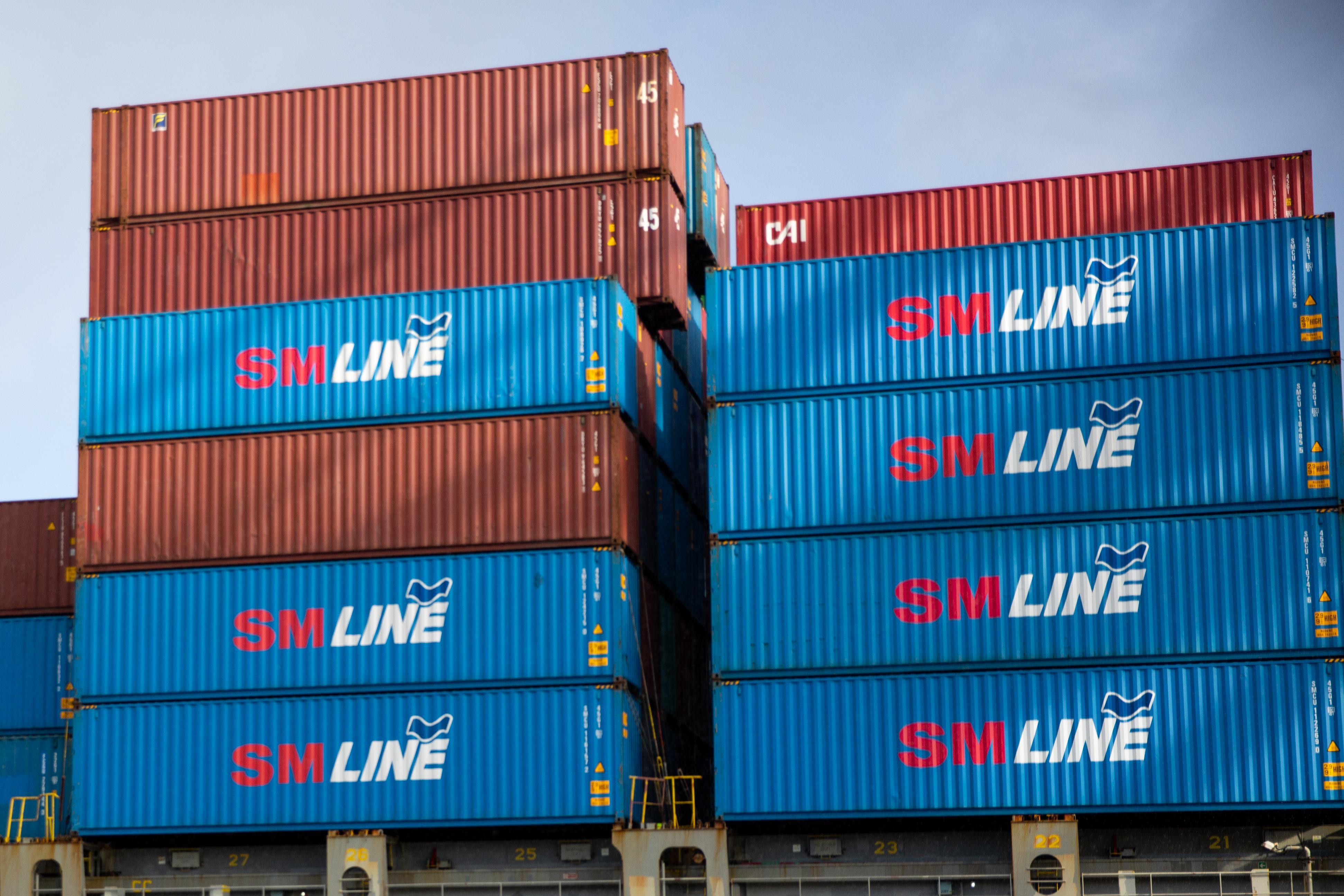The Port of Portland says it cannot afford to keep the state’s only shipping container terminal open past September after a deal with a third-party operator fell through. Despite more business, costs have gone up, pushing the port’s container facility into the red.

South Korea-based container carrier SM Line made its inaugural vessel call at the Port of Portland's Terminal 6 in Portland, Ore., Tuesday, Jan. 14, 2020.
Donald Orr / OPB
The Port of Portland has lost more than $30 million during the past three years, the agency stated in a news release last month. That includes a projected $14 million shortfall for this year.
The loss marks a blow to the region’s economy and makes Portland the largest city on the West Coast without close proximity to container service. Throughout much of the last decade, a labor feud coupled with the logistical challenges of navigating container ships some 100 miles upriver to a relatively small market have made Portland’s Terminal 6 less competitive as a transit point for container goods.
In announcing the end of container handling, top port officials said they were taking the step reluctantly, given the facility’s importance to the region.
“We know that this terminal is a critical statewide asset — it is worthy of further discussions to come up with a financially sustainable business model for container service that has significantly more state funding and investment,” Keith Leavitt, chief trade and economic development officer at the port, wrote in an email to industry stakeholders on Monday. “For now, we have run out of financial options and must take this step.”
Leavitt said in the email the Port has notified the governor and legislative leaders of the closure, in addition to carriers, dock workers and staff. Earlier this year, Port leaders had asked the Oregon Legislature for $8 million in state support, but lawmakers declined.
Consumer electronics, furniture and toys are just some of the items typically shipped via container. Items heading to manufacturing floors or construction sites like lumber and wood products are also shipped in containers, as are some agricultural resources like grass seed, hay and animal feed. The next closest shipping container terminal is in Tacoma, Washington.
“The international shipping container industry has changed dramatically over the last few years,” a spokesperson for Portland Mayor Ted Wheeler said in an email, “and we look forward to partnering with the Port of Portland to re-position Terminal 6 in a way that retains and grows job opportunities, in its continued operations.”
The mayor’s spokesperson also said the city will continue to work with the State of Oregon and government partners to make sure companies have access to other trading channels.
While it was never a huge operation compared to other ports along the West Coast, historically, Terminal 6 has served as an important lifeline for small businesses and farmers throughout the Northwest.
Every year, thousands of metal shipping containers passed through the port, packed with crops, such as hay from the Willamette Valley. Peas, beans and lentils grown by farmers in eastern Washington and central Idaho’s Palouse region barged their harvests down the Columbia River before loading onto massive ocean vessels.
Container operations have stopped at Terminal 6 before, in 2015 when the two main carriers representing more than 95% of the port’s container services announced they would no longer call on Portland. The carriers complained it was taking too long to load and unload ships because of a long-running labor dispute between the International Longshore and Warehouse Union and its then-employer, ICTSI Oregon.
In 2019, a jury found the union engaged in unfair labor practices and awarded ICTSI Oregon $93 million. A federal judge later reduced that award to $19 million. Since then, the union declared bankruptcy. ICTSI, which no longer operates the terminal, “reached a settlement of all legal claims” with ILWU in February for $20.6 million, according to a joint press release.
Starting in January 2020, SM Line began bringing weekly transpacific container ship service to Portland. The carrier’s arrival marked the first weekly service since March 2015.
During the pandemic, Terminal 6 saw more business, driven by global shipping challenges and backlog at other West Coast ports. But that was relatively short-lived. According to the Port of Portland, a decision by BNSF Railway in 2022, to end service between Terminal 6 and Seattle/Tacoma, led to “a decrease in revenues used to cover a majority of the costs to operate the container terminal gate.”
On Monday, the Port of Portland said it has been unable to find a company willing to lease and operate its container operations and announced it would end container service on Oct. 1.


